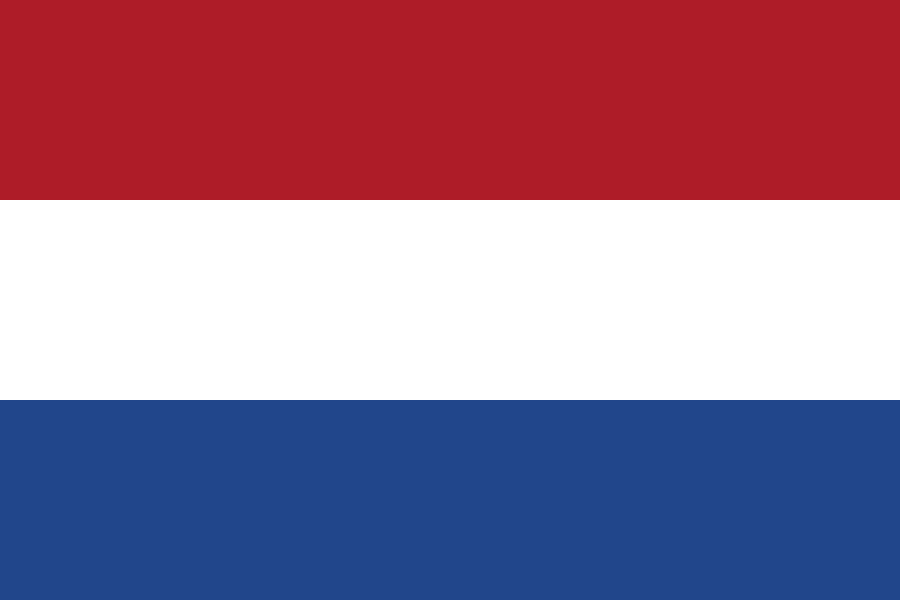Design and Layout:
The Dutch flag features three equally sized horizontal stripes, arranged horizontally from left to right. The top stripe is red, the middle stripe is white, and the bottom stripe is blue.
Color Codes:
The red color is commonly represented by the hexadecimal code #21468B or a bright vermilion shade. The white color is depicted as #FFFFFF, representing pure white. The blue color is symbolized by #21468B or a deep cobalt blue.
Symbolism:
Each color in the flag carries significant symbolism:
- Red symbolizes the Dutch people's courage, valor, and resilience, particularly during historical struggles for independence and freedom.
- White signifies the pursuit of peace, unity, and honesty among the Dutch population, reflecting their desire for harmony and integrity.
- Blue represents loyalty, justice, and sincerity, while also celebrating the Netherlands' strong maritime heritage and its importance as a seafaring nation.
Historical Origins:
The Dutch flag's origins can be traced back to the 16th century, during the Dutch Revolt against Spanish rule. William of Orange, a prominent leader in the fight for Dutch independence, played a pivotal role in adopting the tricolor design as a symbol of the resistance movement.
Initially, the flag featured an orange stripe, symbolizing the House of Orange-Nassau, the Dutch royal family. However, the orange stripe was later replaced with red to create a more distinct contrast with the blue and to avoid confusion with the French flag during naval battles.
Use and Protocol:
The flag of the Netherlands is prominently displayed during national celebrations, holidays, and official events. On special occasions, both the Dutch government and private citizens raise the flag on buildings, ships, and residences to express national pride and unity.
The flag is also specifically used on King's Day (Koningsdag), celebrated on April 27th, in honor of the reigning monarch's birthday, as well as Liberation Day (Bevrijdingsdag) on May 5th, commemorating the end of World War II and the liberation of the Netherlands from Nazi occupation.
Historical Variations:
Throughout history, the Dutch tricolor underwent several changes. Initially, the orange stripe represented the House of Orange-Nassau during the Dutch Revolt. Over time, the orange stripe was replaced with red, solidifying the modern tricolor design used today.
Influence on Other Flags:
The Dutch flag's tricolor design has served as an inspiration for several other countries' flags, including those of Russia, France, and Luxembourg.
The flag of the Netherlands holds profound national significance, reflecting the country's rich history, values, and cultural heritage. Its distinctive tricolor design continues to evoke a sense of pride and unity among the Dutch people.
Last Updated on: November 13, 2025
